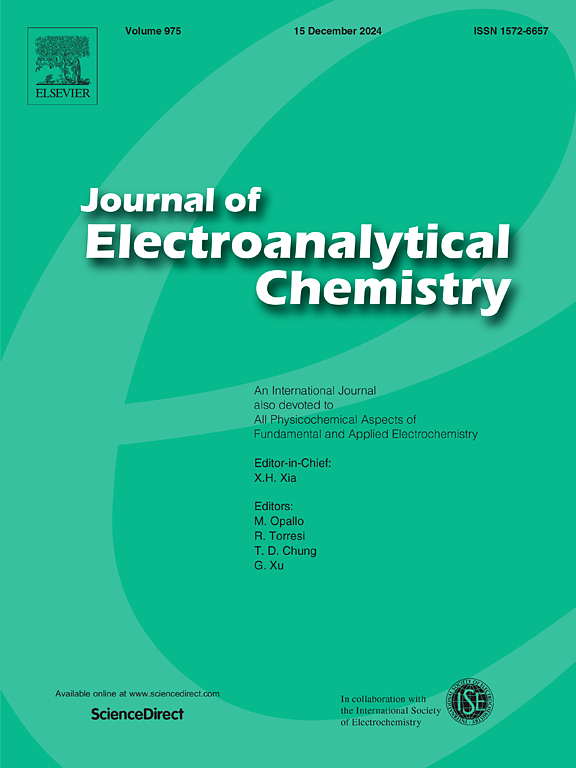Solvent permeation triggers polymetallic gel for highly efficient oxygen evolution reaction
IF 4.1
3区 化学
Q1 CHEMISTRY, ANALYTICAL
引用次数: 0
Abstract
Developing highly effective, low-cost and high-yield electrocatalysts is critical but challenging for oxygen evolution reaction (OER) in electrochemical water splitting. Metal-organic gels (MOGs) have appeared as candidates with great promise due to their unique structural characteristics. Herein, a series of efficient and stable FeCo bimetal and FeCoNi multi-component gel electrocatalysts (FemCoNin-MOGs) were constructed via a penetration strategy of propylene oxide-triggered gelation. Among them, Fe2CoNi-MOGs with the optimal molar ratio display significant OER activity, with an ultra-low overpotential of 268 mV at 10 mA cm−2 current density and long-term stability of more than 15 h, far exceeding commercial RuO2. The multi-component metal gels exhibit a unique three-dimensional porous cross-linked network structure, resulting in a large specific surface area. Moreover, the synergetic effect between multi-components effectively modifies the electronic structure of the surface of Fe2CoNi-MOGs, which promotes their performances. This work contributes to the understanding of multi-metal electrocatalyst in accelerating the OER process of electrolytic water, and expands the direction for alternatives to noble metal electrocatalysts.

求助全文
约1分钟内获得全文
求助全文
来源期刊
CiteScore
7.80
自引率
6.70%
发文量
912
审稿时长
2.4 months
期刊介绍:
The Journal of Electroanalytical Chemistry is the foremost international journal devoted to the interdisciplinary subject of electrochemistry in all its aspects, theoretical as well as applied.
Electrochemistry is a wide ranging area that is in a state of continuous evolution. Rather than compiling a long list of topics covered by the Journal, the editors would like to draw particular attention to the key issues of novelty, topicality and quality. Papers should present new and interesting electrochemical science in a way that is accessible to the reader. The presentation and discussion should be at a level that is consistent with the international status of the Journal. Reports describing the application of well-established techniques to problems that are essentially technical will not be accepted. Similarly, papers that report observations but fail to provide adequate interpretation will be rejected by the Editors. Papers dealing with technical electrochemistry should be submitted to other specialist journals unless the authors can show that their work provides substantially new insights into electrochemical processes.

 求助内容:
求助内容: 应助结果提醒方式:
应助结果提醒方式:


